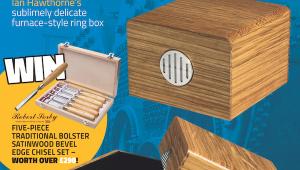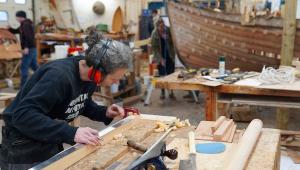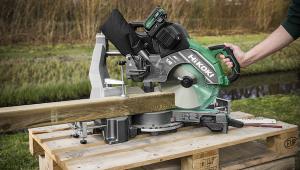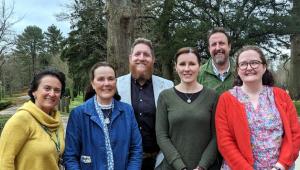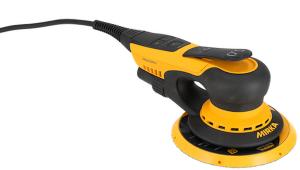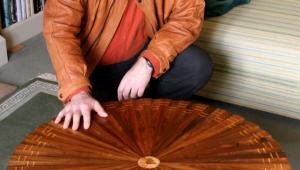Bespoke trophy cabinet hand-crafted For Aboyne Highland Games
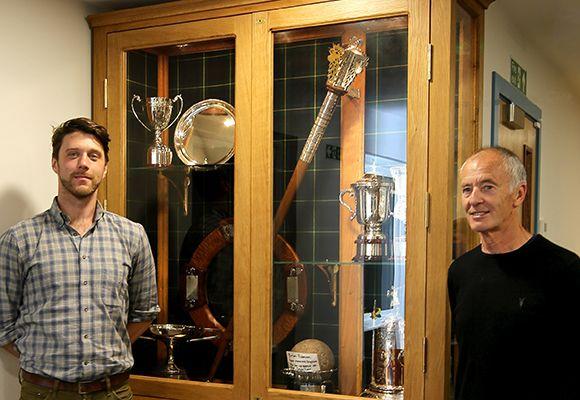
A bespoke piece of furniture has been created by a Deeside craftsman to house historic trophies that are competed for annually at Aboyne Highland Games.
The new trophy cabinet has been produced by Aboyne-born furniture maker Lewis Lilburn, who's also a member of the Aboyne Highland Games committee. Its creation promotes traditional cabinetmaking and was made possible thanks to funding Aboyne Highland Games received from the Marr Area Partnership.
Organisers of the 154-year-old event hope the piece, which is on public display in the Aberdeenshire village, will be cherished by future generations. It provides another permanent link between the annual August event and the village, which already includes the Millennium Gates that stand on the edge of Aboyne Green, the venue for Aboyne Highland Games.
Made of Scottish oak, the trophy cabinet measures 1.3m wide and stands 2.4m tall. It took Lewis over 300 man-hours to design and craft; sawing, chiselling, planing sanding, gluing and finishing the wood to transform it into the substantial piece of furniture.
The display case was constructed with traditional mortise & tenon joints throughout its frame, affording it great strength, and features a cornice topping. Behind a pair of glazed doors, framed with coved edges, the cabinet’s interior has been designed to accommodate a number of different trophies that have been donated to Aboyne Highland Games over the decades.
The Gordon family tartan lines the interior, acknowledging the event’s chieftain, Granville Gordon, the 13th Marquis of Huntly and his family’s connection to the games. His grandfather was the event’s founding chieftain in 1867. It was a role he held until his death in 1937, at which time his son, Granville’s father, assumed the role, which he held until his death in 1987.
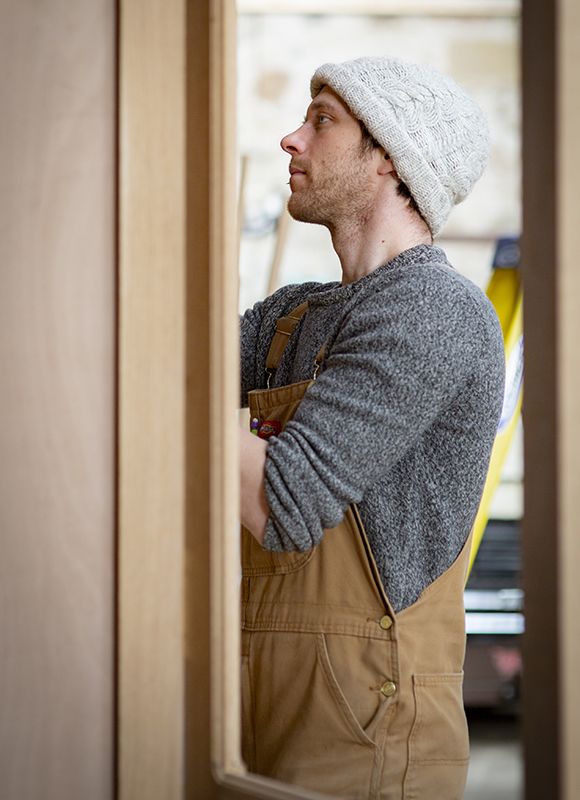
Locally sourced
Materials for the cabinet were purchased from Scottish businesses. The wood was supplied by Logie Timber and Gilmore & Aitken, while the glazing was provided by the Cairngorm Group. Upholstery and tartan to line the interior were sourced from McEwan of Inverness and Wm Blackhall in Tarland respectively.
Aboyne Highland Games commissioned Lewis to design and build the cabinet owing to his, and his family’s, connection to the event. The experienced craftsman spent five years studying furniture making and product design, before working in the sector for the past decade.
Lewis is currently working as a self-employed carpenter and cabinetmaker in Inverness-shire, supporting the restoration of old buildings on Belladrum Estate near Beauly into a creative hub. Alongside this, he works on private commissions during evenings and weekends.
Alistair Grant, chairman of Aboyne Highland Games, said: “Our new trophy cabinet is an impressive item of furniture, which has been beautifully crafted by Lewis using traditional techniques and Scottish suppliers. The effort and attention to detail that he has put into its creation is strongly evident. Using the Gordon tartan for the interior is a lovely touch and recognises the role of our chieftain and his family. It's a splendid home for some of our historic trophies and will be an heirloom piece of furniture that future generations can enjoy.”
Wood runs through the grain of the Lilburn family. Lewis’s great-grandfather, Lieutenant Colonel William Lilburn of Coull, planted a large woodland near Aboyne containing in excess of six million trees. The woodland was managed by his son Alistair, who along with his son James – Lewis’s late father – established a sawmill to harvest the timber.
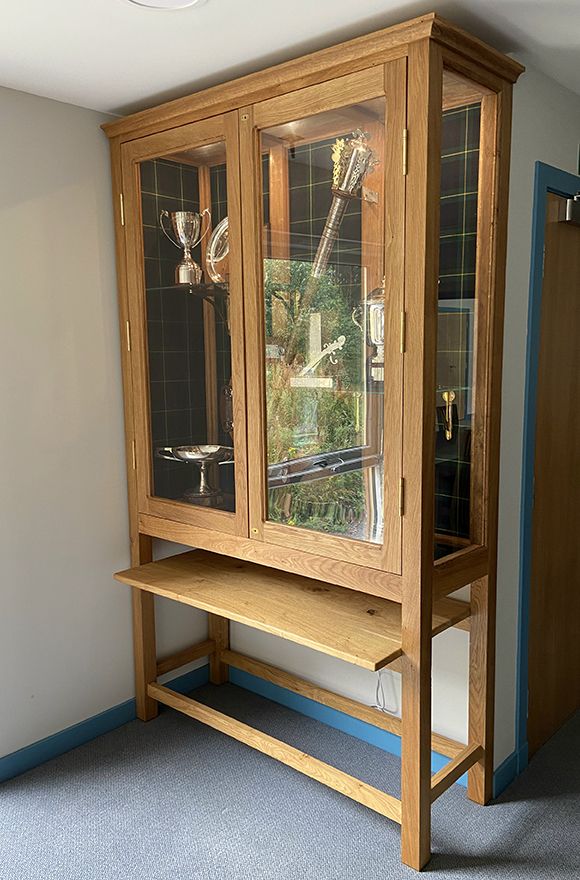
A fitting contribution
An interest in nature, wood and design took root in Lewis as he grew up Coull Estate near Aboyne. Upon leaving school, Lewis completed an HND in furniture making at Buckinghamshire New University in High Wycombe, a town that's been synonymous with furniture making since the 1800s. He then completed a BA in contemporary furniture and related product design, before working as part of the design and technical team at a company manufacturing bespoke kitchen and furniture items. Lewis recently furthered his studies by undertaking an MA in material practice at The university of Edinburgh.
Commenting on the cabinet, Lewis added: “It was a privilege to be asked to create the trophy cabinet for Aboyne Highland Games, cementing my family’s connection with the event which stretches back decades. I hope that my ancestors would find it a fitting contribution to the story of the games.
“The cabinet is an imposing piece and has been constructed with mortise & tenon joints and intricate details, celebrating traditional cabinet making techniques. Creating the glazed doors was a bit of a challenge due to their size and the fact that timber tends to move slightly if its moisture content isn’t quite right. It meant that a good degree of thought was required before the glass went in.
“In Scotland, we're very fortunate to have fantastic materials to work with and it was a pleasure to incorporate some of them into the cabinet. I’m grateful to several people for their support and guidance as I’ve brought the initial sketches to life. Particular thanks must go to my mother, Irene Lilburn, who helped to get the cabinet installed and looking its best.”
Following its cancellation for the second successive year, Aboyne Highland Games hosted a virtual celebration of the traditional event, which included online piping and fiddle competitions. The virtual programme can be viewed on the event’s Facebook page.
- Log in or register to post comments
